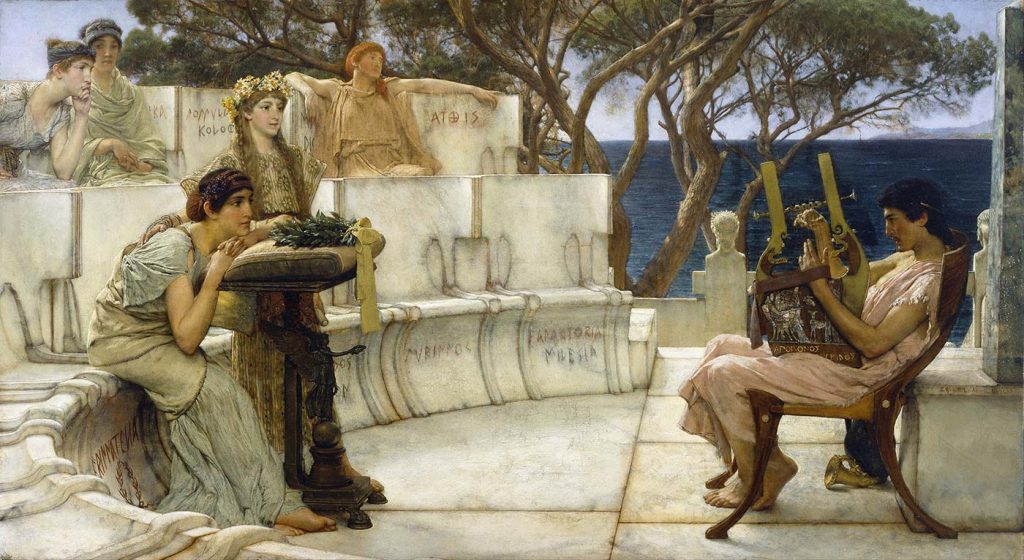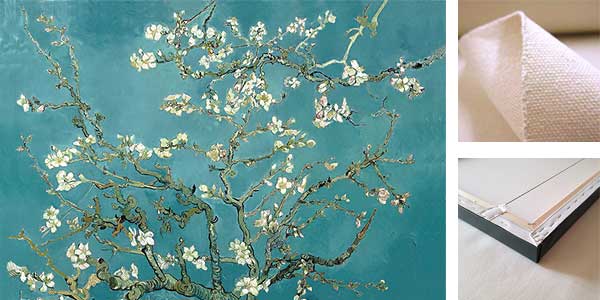
Sappho and Alcaeus by Sir Lawrence Alma-Tadema was created in 1881. The painting is in The Walters Museum. The size of the work is 66 x 122 cm and is made of oil on panel.
In 1870, the Dutch-born, Belgian-trained artist Alma-Tadema moved to London, where he found a ready market among the wealthy middle classes for paintings re-creating scenes of domestic life in imperial Roman times. In this work, however, he turns to early Greece to illustrate a passage by the ancient Greek poet Hermesianax (active ca. 330 BC) preserved in Atheneaus, Deipnosophistae, “Banquet of the Learned,” book 2, line 598. On the island of Lesbos (Mytilene), in the late 7th century BC, Sappho and her companions listen rapturously as the poet Alcaeus plays a “kithara.” Striving for verisimilitude, Alma-Tadema copied the marble seating of the Theater of Dionysos in Athens, although he substituted the names of members of Sappho’s sorority for those of the officials incised on the Athenian prototype… Discover more in The Walters Museum.
The Artist: Sir Lawrence Alma-Tadema (1836 – 1912) was a Dutch painter of special British denizenship. Born in Dronrijp, the Netherlands. He trained at the Royal Academy of Antwerp, Belgium. He settled in England in 1870 and spent the rest of his life there. A classical-subject painter, he became famous for his depictions of the luxury and decadence of the Roman Empire, with languorous figures set in fabulous marbled interiors or against a backdrop of dazzling blue Mediterranean Sea and sky.
Though admired during his lifetime for his draftsmanship and depictions of Classical antiquity. His works fell into disrepute after his death, and only since the 1960s has it been re-evaluated for its importance within nineteenth-century British art… Read more
